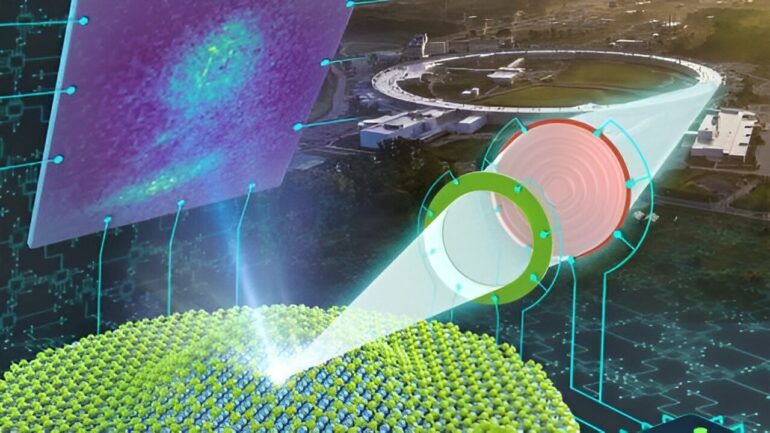As anyone who has ever skimmed a book or magazine can tell you, sometimes you don’t have to read every word to grasp the essence. Inspired by this notion, scientists are harnessing the power of artificial intelligence (AI) to enable a form of “speed reading” in microscopy. This could revolutionize the way researchers acquire data and allow them to preserve the integrity of precious samples.
Researchers at the U.S. Department of Energy’s (DOE) Argonne National Laboratory have developed an autonomous, or self-driving, microscopy technique. It uses AI to selectively target points of interest for scanning. Unlike the traditional point-by-point raster scan, which methodically covers every inch like the sequential reading of words on a page, this innovative approach identifies clusters of intriguing features, bypassing humdrum regions of monotonous uniformity.
“Many regions of a sample can be safely disregarded or at least not sampled heavily, but regions where there are discontinuities and boundaries can instead contribute the vast majority of information about the sample,” said Charudatta (C.D.) Phatak, a group leader and materials scientist at Argonne and one of the authors of the study published in Nature Communications. By homing in on these areas, the technique dramatically speeds up the experimental process.
The AI algorithm at the heart of the experiment initiates the scanning process by selecting a set of random points on the sample. It then simultaneously gathers data from these points while predicting subsequent points of interest. This on-the-fly prediction capability empowers researchers to accelerate data acquisition, eliminating the need for human intervention and dramatically expediting the experiment.
Saugat Kandel, a postdoctoral researcher at Argonne and lead author of the study, emphasized the time-saving benefits. “Taking the human component out of the prediction process saves a great deal of time and really speeds up the experiment,” he said. “There’s also only a small number of scientists who can perform these experiments effectively as they are done now.”
This streamlined approach to data acquisition is particularly invaluable in facilities like Argonne’s Advanced Photon Source (APS), where beam time is a precious resource. By reducing the time needed for gathering data, scientists can conduct additional experiments with the beam time they have reserved.
“The ability to automate experiments with AI will significantly accelerate scientific progress in the coming years,” said Argonne group leader and computational scientist Mathew Cherukara, another author of the study. “This is a demonstration of our ability to do autonomous research with a very complex instrument.”
One of the surprising things about the AI model is that it doesn’t need to be trained on a technical dataset. “The AI can be trained on a generic image, and it knows immediately how to recognize the areas of interest,” said Argonne Computational Mathematician Zichao (Wendy) Di, another co-author.
AI-driven microscopy could have a broad range of uses across a wide variety of microscopes, said Tao Zhou, an Argonne nanoscientist and co-author. “From X-ray microscopy to electron microscopy to atomic probe microscopy, any microscopy study in which 2D scanning is called for can be accelerated by this technique.”
This pioneering technique not only offers unparalleled speed but also opens up new avenues for scientific exploration. By rapidly scanning samples and extracting key information, scientists can delve into the intricate world of materials and gain insights that were previously unattainable.
The synergy between artificial intelligence and microscopy heralds a new era of discovery, where the frontiers of science are continuously pushed, and the mysteries of the microscopic realm unravel before our eyes.
More information:
Saugat Kandel et al, Demonstration of an AI-driven workflow for autonomous high-resolution scanning microscopy, Nature Communications (2023). DOI: 10.1038/s41467-023-40339-1
Provided by
Argonne National Laboratory
Citation:
Using artificial intelligence, scientists develop self-driving microscopy technique (2023, October 5)



